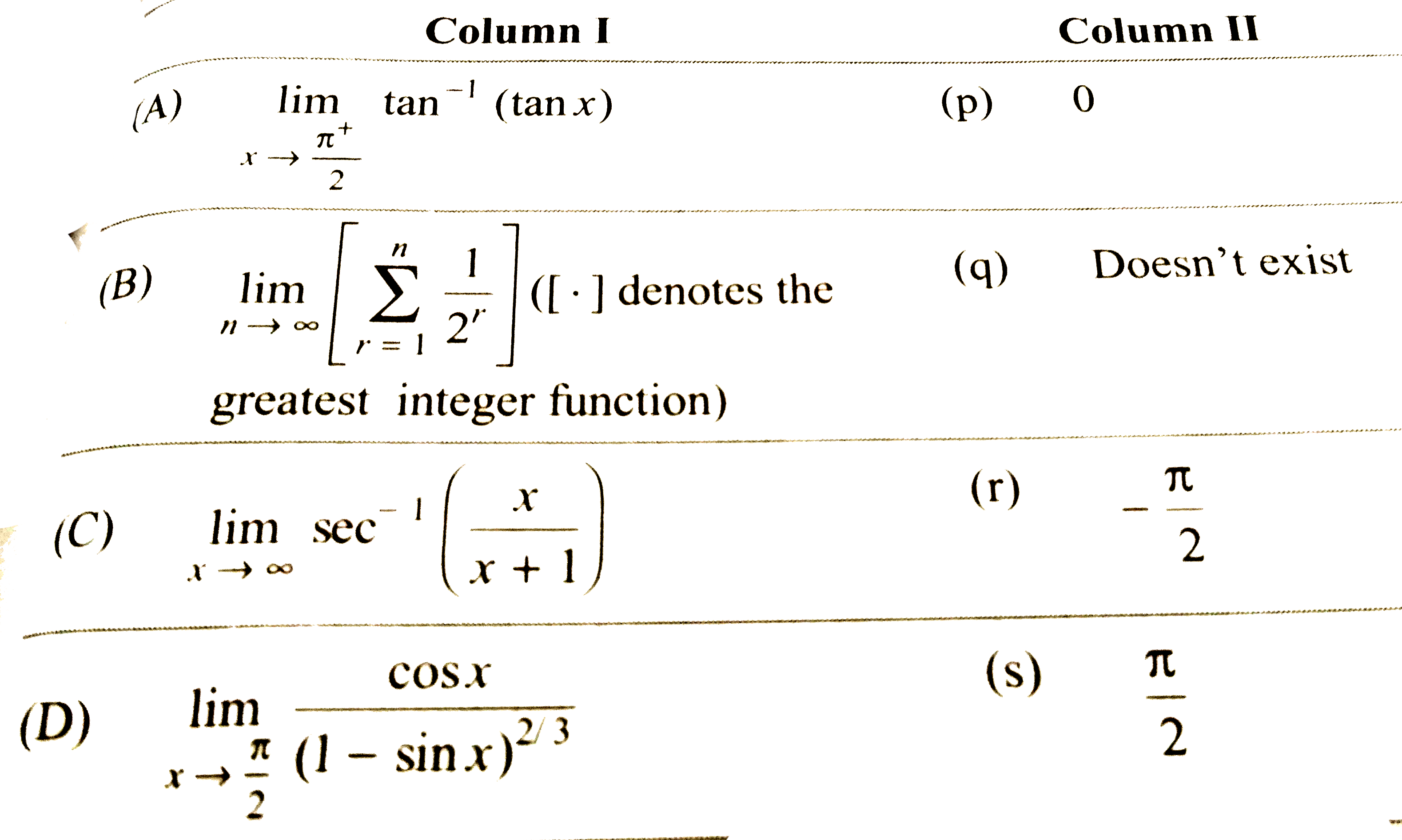If (lim)x→0(1+ax+bx2)2x=e3, then find the value of aandb.Solution in Punjabi
a=3,b=0
a=32,b=1
a=32,b=4
a=2,b=3
The correct Answer is:B, C
Step by step video & image solution for If ("lim")_(xvec0)(1+a x+b x^2)^(2/x)=e^3, then find the value of aa n dbdot by Maths experts to help you in doubts & scoring excellent marks in Class 12 exams.
Topper's Solved these Questions
- BOOK - ARIHANT MATHSCHAPTER - LIMITSEXERCISE - Exercise (Passage Based Questions)10videos
LIMITS
- BOOK - ARIHANT MATHSCHAPTER - LIMITSEXERCISE - Exercise (Matching Type Questions)3videos
LIMITS
- BOOK - ARIHANT MATHSCHAPTER - LIMITSEXERCISE - Exercise (Single Option Correct Type Questions)38videos
LIMITS
- BOOK - ARIHANT MATHSCHAPTER - INVERSE TRIGONOMETRIC FUNCTIONSEXERCISE - Exercise (Questions Asked In Previous 13 Years Exam)8videos
INVERSE TRIGONOMETRIC FUNCTIONS
- BOOK - ARIHANT MATHSCHAPTER - LOGARITHM AND THEIR PROPERTIESEXERCISE - Exercise (Questions Asked In Previous 13 Years Exam)4videos
LOGARITHM AND THEIR PROPERTIES
Similar Questions
If limx→af(x)=1 and limx→ag(x)=∞ then limx→a{f(x)}g(x)=elimx→a(f(x)−1)g(x)
limx→0(sinxx)sinxx−sinx is equal to03:56View SolutionMatch the statements of Column I with values of Column II.
 03:17View Solution
03:17View Solutionlimx→0sin(πcos2(tan(sinx)))x2 is equal to
02:38View SolutionIf α=3sin−1(611andβ=3cos−1(49), where the inverse trigonometric functions take only the principal values, then the correct options (s) is (are)
02:20View SolutionIn Which quadrant Point (−2,−3) will be lie.
03:18View SolutionIf f(x)=x(e|x|+[x]−2|x|+[x]) then (where [.] represents the greatest integer function) (lim)x→0+f(x)=−1 b. (lim)x→0−f(x)=0 c. (lim)x→0□f(x)=−1 d. (lim)x→0□f(x)=0
03:43View SolutionIf (lim)x→∞{x2+1x+1−(ax+b)}=0, then find the value of aandb.
03:53View SolutionEvaluate: (lim)x→02x−1√1+x−1
03:42View SolutionEvaluate: (lim)x→0 (1+x)1x−e+12exx2
01:50View SolutionEvaluate: (lim)x→0ex^2−cosxx2
05:51View SolutionEvaluate: (lim)x→0ex+e−x−2x2
03:30View SolutionGiven (lim)x→0f(x)x2=2,where [.] denotes the greatest integer function, then (A) (lim)x→0[f(x)]=0 (B) (lim)x→0[f(x)]=1 (C)(lim)x→0[f(x)x] does not exist (D)(lim)x→0[f(x)x] exists
10:20View SolutionIf the expression ax4+bx3−x2+2x+3 has remainder 4x+3 when divided by x2+x−2, find the value of aandb.
04:47View SolutionIf f(x)=x(e|x|+[x]−2|x|+[x]) then (where [.] represents the greatest integer function) (lim)x→0+f(x)=−1 b. (lim)x→0−f(x)=0 c. (lim)x→0□f(x)=−1 d. (lim)x→0□f(x)=0
05:18View SolutionIf f(x)=(lim)n→∞(cos(x√n))n , then the value of (lim)(x→0)f(x)−1x is 0 b. 1 c. 2 d. 3/2
03:02View SolutionIf the expression ax4+bx3−x2+2x+3 has remainder 4x+3 when divided by x2+x−2, find the value of aandb.
05:49View Solution

